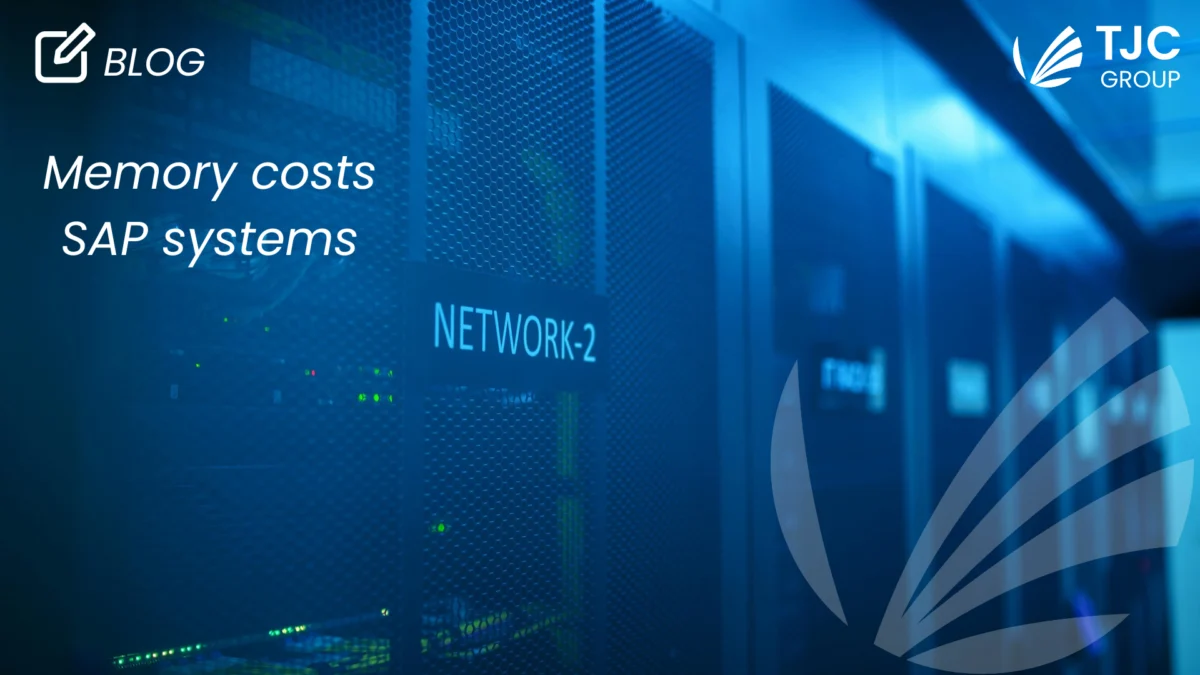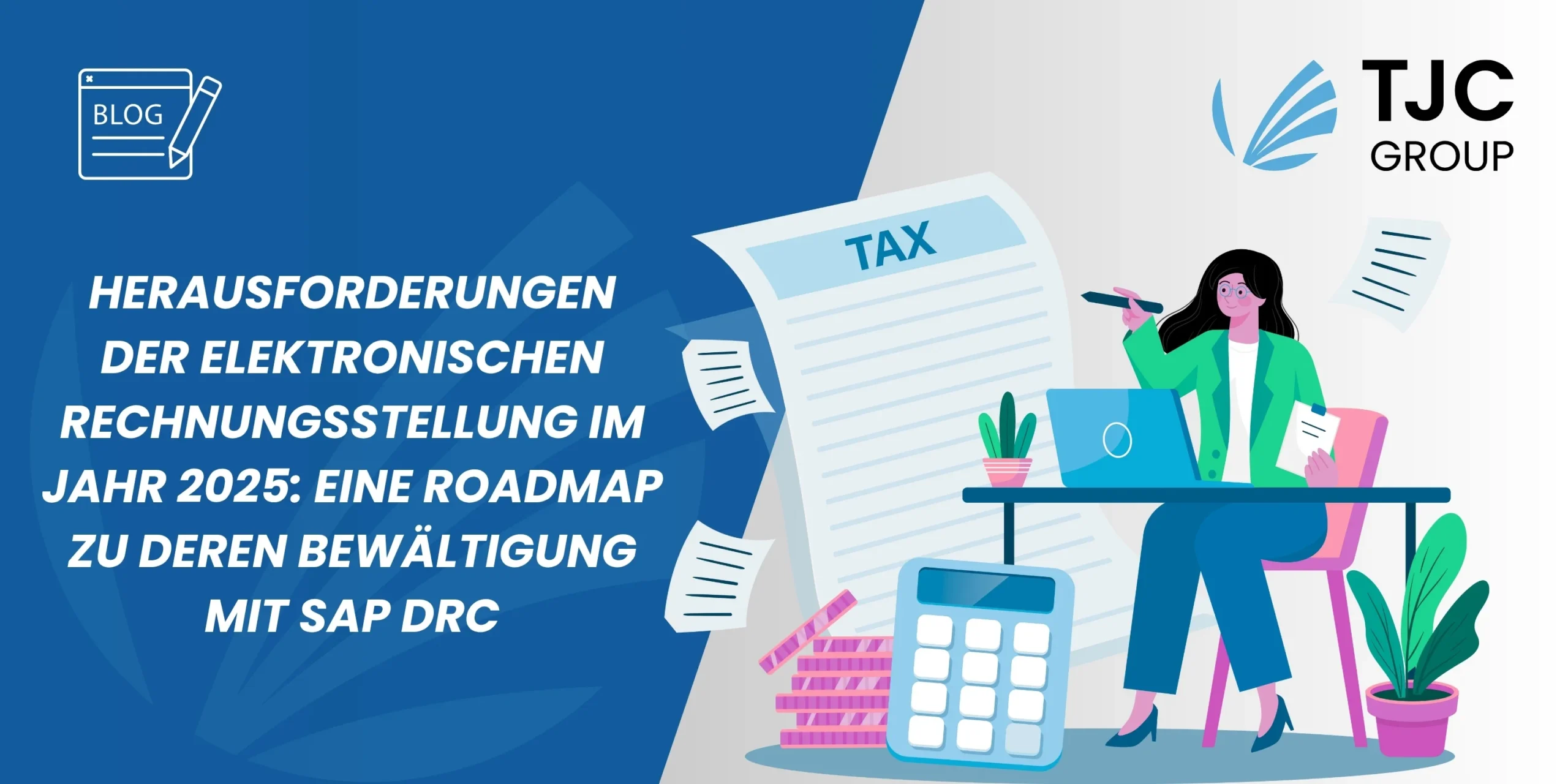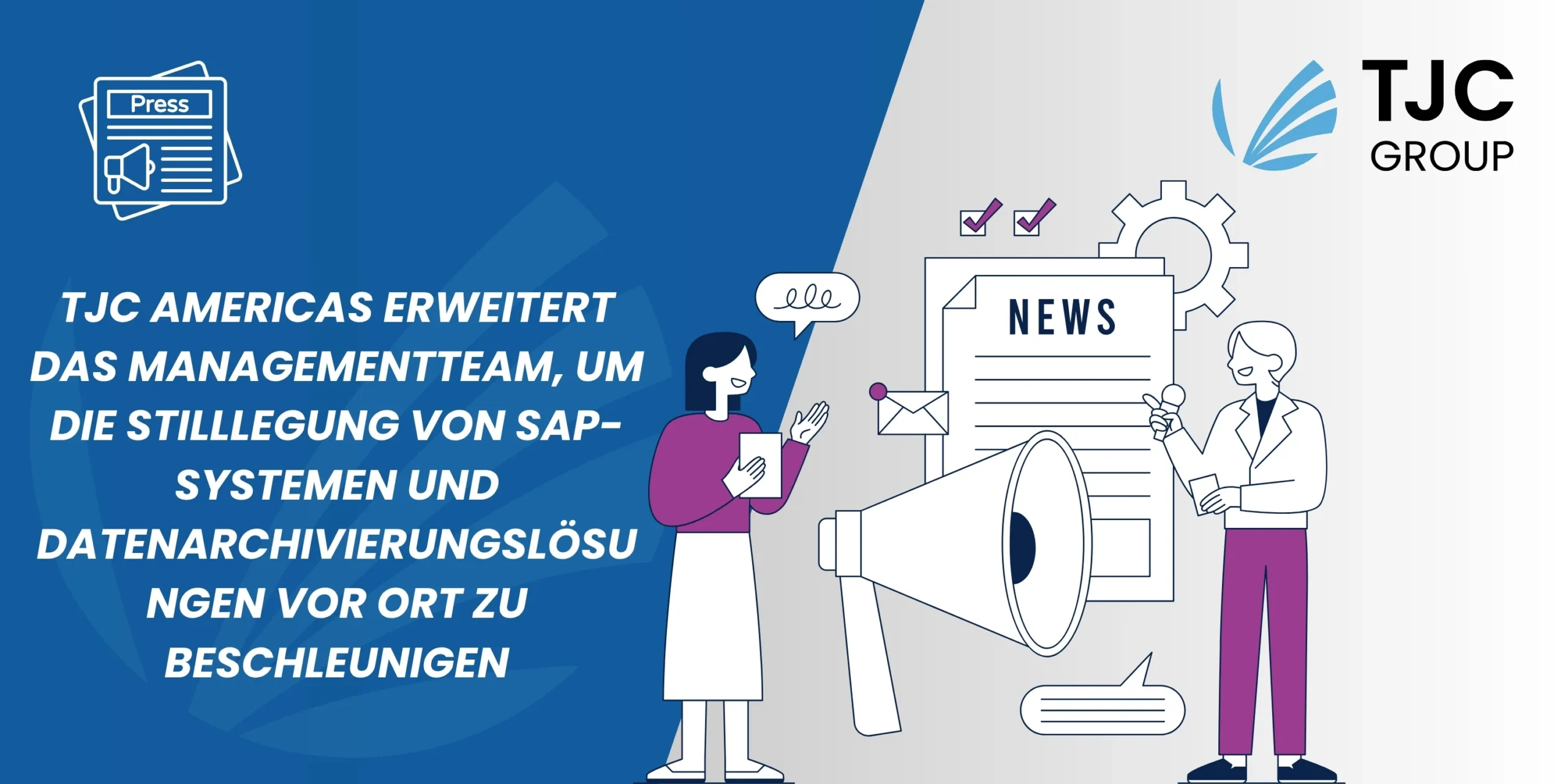Autor: Thierry Julien, CEO der TJC-Gruppe
Im Laufe der Zeit, ERP- und IT-Systeme werden immer größer. Je mehr Daten erzeugt werden, desto mehr Speicher wird im System benötigt. Dieser Blogartikel untersucht, warum die Speicherkosten nicht linear ansteigen und veranschaulicht das Speicherwachstum einer SAP-Datenbank anhand eines mathematischen Beispiels.
Zahlen im Kontext
Lassen Sie uns mit einigen historischen Werten beginnen, an die sich erfahrene IT-Profis vielleicht noch erinnern.
- Damals in R/2, auf dem Mainframe, vor der Virtual Storage Access Method (VSAM), war die Datenbankbasis auf 2 GB begrenzt. Ja, 2 GB, nicht 2 TB, und bedeutende Unternehmen arbeiteten auf SAP-Systemen…
- Damals benötigte ein 20 GB großer Plattenspeicher ein Volumen von 35 Kubikfuß (1 Kubikmeter). Und er war teuer, etwa 200.000 $ für 20 GB im Jahr 1990.
- Mit R/3 war es vor 20 Jahren eine Leistung, ein 500-GB-System zu betreiben, selbst für Automobilhersteller.
- Vor 15 Jahren war es normal, ein SAP-System mit einem TB zu betreiben, aber wenn man eine Microsoft SQL-Datenbank verwendete, stieß man an die Grenzen der Datenbank.
- Heutzutage gilt der Betrieb eines 2 TB-Systems nicht mehr als Errungenschaft, und viele Unternehmen betreiben SAP-Systeme mit einer 10 TB großen HANA-Datenbank (selbst mit einer komprimierten, spaltenbasierten Datenbank).
Als Nächstes: Geschäftliche Gründe für die Datenerhöhung
In den 1960er Jahren war die Produktion das Hauptthema, nicht der Verkauf. Die Hersteller produzierten, beluden die Lastwagen und ließen sie an die Wiederverkäufer gehen. Die Anzahl der Lastwagen wurde als Maßeinheit betrachtet. Heute verfolgt ein Einzelhandelsunternehmen jedes Produkt einzeln. Das ist ein viel größeres Datenvolumen für dasselbe Produkt, das verkauft wird. Und wir können uns auf eine ganze Reihe von Veränderungen einstellen, die auf uns zukommen:
- Einige Unternehmen möchten jedes verkaufte Produkt bis zu dem Kunden zurückverfolgen, der das Produkt gekauft hat: wer das Eis gekauft hat, wann, zu welchem Preis und so weiter. Unilever hat dies mit SAP CDP (Customer Data Platform) demonstriert: https://www.youtube.com/watch?v=RzzENGY4TZg
- In ähnlicher Weise verfolgen manche Menschen die genaue Zeit und den Ort, an dem jede Pille oder jedes Medikament eingenommen wurde, Smartphones oder Apple Watch sind mit einer Person verknüpft, und das Smartphone oder die Apple Watch des Patienten wird identifiziert.
- Ebenso verfolgen die Tabakhersteller die Zigarettenverpackungen, damit die Regierungen den illegalen Zigarettenhandel verfolgen können.
Wie Sie sehen, läuft alles – von der Lkw- bis zur Personenverfolgung, von der Produktverfolgung bis zur Verbrauchsverfolgung – auf einen erheblichen Anstieg des Datenvolumens in ERP-Systemen hinaus.
Warum flaches Wachstum immer noch unterschätzt wird
Stellen wir uns einmal vor, dass das Wachstum der Datenbank stabil ist – nehmen wir an, es liegt bei einem TB pro Jahr. Stellen wir uns vor, dass ein Teil der Zahlung jährlich auf der Grundlage des Volumens erfolgt – dies ist der Fall für die SAP HANA-Datenbank und die S/4HANA-Dimensionierung.
- Im Jahr 1 werden Sie 1 TB erreichen.
- Im Jahr 2 werden Sie 2 TB erreichen, also insgesamt 3 TB über 2 Jahre.
- Im Jahr 3 werden Sie 3 TB erreichen, also insgesamt 6 TB über 3 Jahre.
*Siehe Anhang für die vollständigen Berechnungen
Die Formel lautet also: Im Jahr n erreichen Sie n TB, so dass insgesamt n(n+1)/2 TB über n Jahre erreicht werden.
Wenn wir davon ausgehen, dass die meisten ERP-Systeme in der Regel etwa 15 Jahre alt sind, dann werden Sie im Jahr 15 15 TB erreichen, was insgesamt 120 TB über 15 Jahre ausmacht.
Das bedeutet, dass Sie über einen Zeitraum von 15 Jahren im Durchschnitt jährlich 120/18 = 8 TB benötigen.
Bei einem flachen Wachstum (0% Wachstumssteigerung) zahlen Sie also das 8-fache des jährlichen Wachstums. Bei einem typischen Preis von 150k$ pro Jahr und TB sind das 1,2 Millionen pro Jahr. Das ist wahrscheinlich mehr, als Sie erwartet haben, nicht wahr?
Wir hoffen, dass die SAP-Archivierung mit der Software und Beratung der TJC Group eine großartige ROI-Möglichkeit bietet. Sorgen Sie für eine kontinuierliche Reduzierung des Datenvolumens und der Speichernutzung mit automatisierter SAP-Datenarchivierung. Mehr dazu erfahren Sie in diesem Blogbeitrag: 6 Gründe, die für eine regelmäßige Datenarchivierung in SAP-Systemen sprechen
Anhang
Für diejenigen, die Spaß an Mathematik haben… Lassen Sie uns das obige Argument beweisen:

Mit der Paring-Methode. Betrachten Sie die Summe:
S=1+2+3+…+n
Wir können die Summe auch in umgekehrter Reihenfolge schreiben:
S=n+(n-1)+(n-2)+…+1
Addieren Sie nun diese beiden Gleichungen Term für Term und beachten Sie dabei, dass jedes der n Paare die Summe n+1 ergibt:
2S=(n+1)+(n+1)+(n+1)+…+(n+1)
Also
2S=n(n+1)
Und wir erreichen unseren Punkt als
S=n(n+1)/2
Vielleicht finden Sie eine andere Methode, um das gleiche Ergebnis zu erhalten. Zum Beispiel den Schritt-für-Schritt-Beweis durch mathematische Induktion. Viel Spaß!







